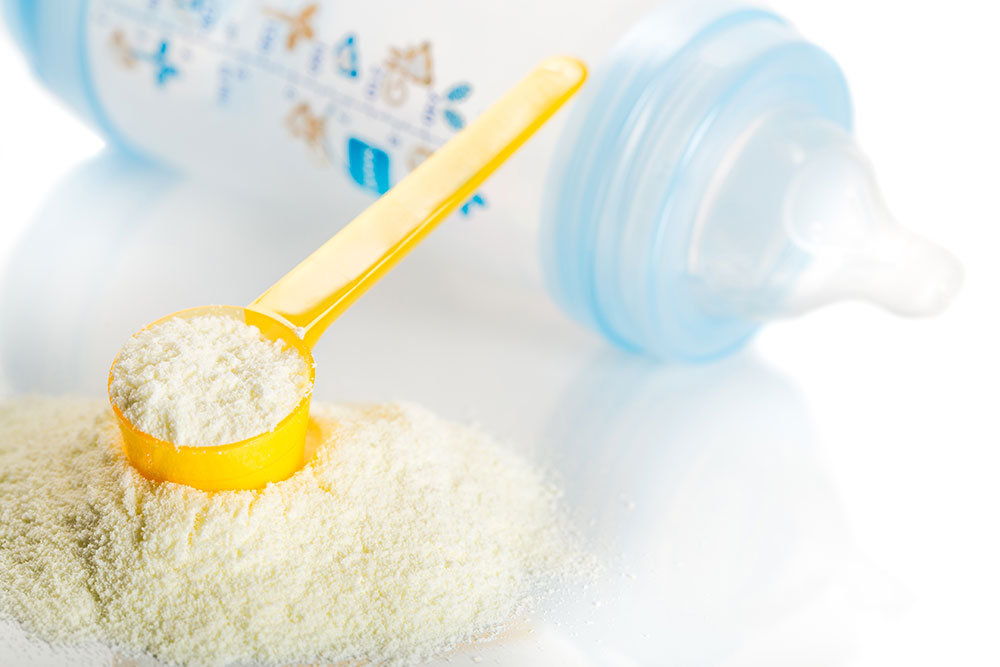Infant formula powders are developed to replicate the nutritional benefits of human milk, particularly for infants who are not breastfed. These formulations must deliver essential fatty acids, vitamins, and other micronutrients crucial for early development. Their composition is regulated by stringent standards that evolve in line with scientific and nutritional advances. A clear example is the mandatory inclusion of docosahexaenoic acid (DHA) in follow-on formulas within the European Union since 2020 (Regulation CE 2016/127). While these updates aim to enhance the nutritional quality of infant formulas, they also introduce new challenges, particularly concerning oxidative stability.
Polyunsaturated fatty acids like DHA are highly susceptible to oxidation, which can degrade nutritional compounds, produce undesirable flavors, and reduce shelf life. As a result, improving the oxidative stability of powdered infant formulas is essential not only for preserving product quality, but also for maintaining regulatory compliance and consumer trust.
Quality markers and detection of oxidative degradation in baby formulas
Oxidative deterioration in infant formula is primarily monitored through a set of well-established chemical indicators, including the peroxide value (PV) to determine hydroperoxides, and thiobarbituric acid reactive substances (TBARS) to detect aldehydes. These parameters reflect both the early and advanced stages of lipid oxidation. The peroxide value measures primary oxidation products, while TBARS and volatile compounds, such as hexanal, are indicators of secondary oxidative changes that directly affect product aroma and flavor.
Studies show that oxidation begins even under controlled storage conditions, leading to reduced levels of essential nutrients like DHA and ARA. The oxidative degradation of vitamin E, in particular, signals the progression of lipid peroxidation and can significantly impair the nutritional quality of infant formula. Furthermore, loss of retinyl esters (vitamin A precursors) has also been observed during high-pressure homogenization and prolonged storage [1].
Factors affecting shelf life and oxidative stability in powdered formulas
The oxidative stability of infant formula powders is influenced by several interrelated factors:
- Fat composition: the inclusion of polyunsaturated fatty acids, especially DHA, in infant formula increases the risk of oxidation due to their high reactivity. While these lipids are crucial for infant development, particularly for neural functions, their chemical instability presents a major challenge for formulators. The addition of other prooxidants, such as infant formula with iron, to meet nutritional requirements, can also challenge stability.
- Emulsifier type and interface design: the composition of the oil-water interface is a key factor in controlling oxidation. Studies have shown that emulsifiers based on dairy phospholipids (DPL) create more stable interfaces than those using soy lecithin. DPL contributes to the formation of rigid membrane domains around lipid droplets, which can protect sensitive components from degradation [1].
- Storage conditions: exposure to light, oxygen, and elevated temperatures accelerates oxidative degradation. Even under ambient conditions, storage time is a determining factor in the accumulation of primary and secondary oxidation products, as well as in the reduction of brightness and formation of off-flavors.
Role of natural antioxidants in preventing oxidative spoilage
Natural antioxidants are indispensable in stabilizing infant formula powders, especially those enriched with highly unsaturated fatty acids.
Tocopherols protect formula lipids by neutralizing free radicals and interrupting the lipid peroxidation chain. They also delay the formation of peroxides, contributing to the preservation of nutritional quality and organoleptic properties. Importantly, research has shown that the presence of tocopherols creates a protective lag phase of up to nine days during accelerated storage tests, extending the formula’s effective shelf life before peroxide values begin to rise [1].
Preventing oxidation reactions in infant formula powders
To effectively prevent oxidation and extend infant formula shelf life, a multi-pronged formulation strategy is essential. This includes selecting the right combination of ingredients, optimizing processing conditions, and ensuring the inclusion of protective compounds. Incorporating antioxidants at the right stage of processing helps ensure their integration into the lipid phase, maximizes their protective effect, and fortifies the final product.
Natural vitamin E in powder form, such as Btsa’s Nutrabiol® E, offers a reliable and versatile solution for infant nutrition applications. Derived from non-GMO vegetable oils, this ingredient is clean-label, allergen-free, and fully compliant with global regulatory standards. Its stability during processing and storage makes it particularly suitable for powdered formulas, where oxidative protection is critical from production through to end-use.
Btsa’s expertise in producing high-quality natural antioxidants tailored for sensitive applications like infant nutrition reflects more than two decades of continuous innovation and quality assurance. With Nutrabiol® E, manufacturers can meet stringent nutritional standards while also improving the shelf stability and integrity of their infant formula products.
Sources
[1] Cancalon M, Barouh N, Hemery Y, Baréa B, Durand E, Bourlieu-Lacanal C, Villeneuve P. Stabilization of infant formulas against lipid oxidation: What are the key structural levers?. European Journal of Lipid Science & Technology. 2024; 126:e2300161. doi.org:10.1002/ejlt.202300161

